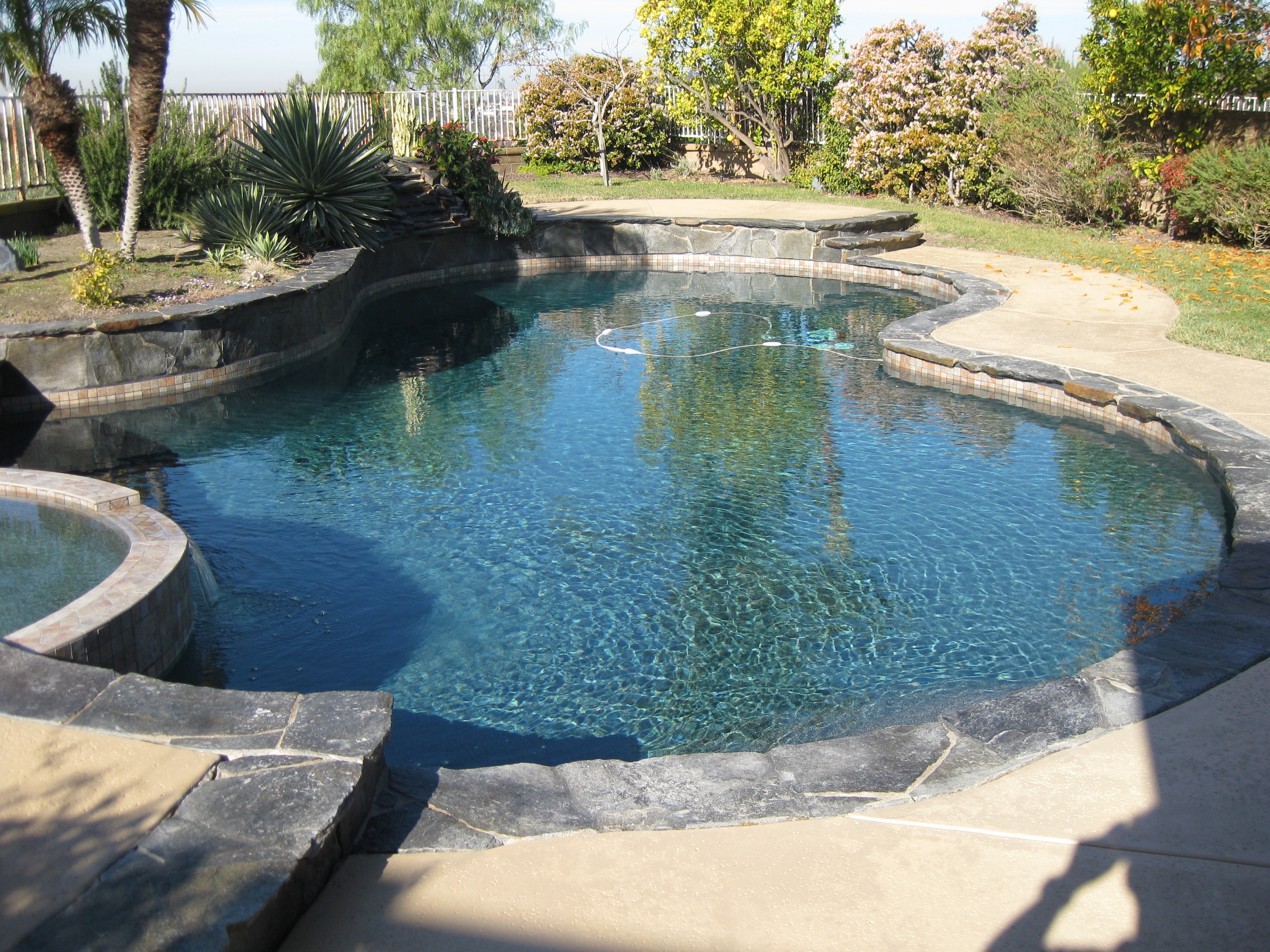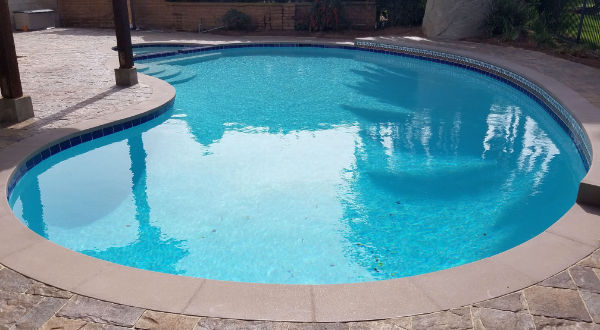FREE Estimate (619) 593-8880


Pool coping is the visual transition between your pool water’s edge and your deck. It’s typically 12”± back from the pool edge. The materials can be the same as the deck or made from a different material and color.
Pool coping is the interface between decking and waterline tile.
There are many types of pool decking/ coping. Each has its own qualities that may affect your decision.
This is when the deck is a continuous material that extends to the edge of the pool, over-extending by three inches. There is no break between the deck and the last 12”± which is then considered the coping area. This is a perfect choice when you want a more uniform look to the deck and eliminates the need for mastic (an adhesive used as a joint-sealer between concrete sections) behind the coping. Due to its construction, cantilever pool coping does not allow for a contrasting outline of the pool with another material.
Adding a mastic trench to an existing cantilever decking–if you have an existing cantilever deck and issues with the deck or popping tiles, we can cut a trench in the deck 12″ back from the edge as a relief joint and fill with mastic. This creates a cushion between the deck and the coping that helps reduce damage during earth movement.
Commercial pools require, by code, pool and spa depth markers and no diving markers, when applicable. For a beautiful, more subtle look, we can etch the required information right into the coping stone! Or, if you wish, we can add the usual tile inset into the stone.
Pool coping is built to a variety of shapes, sizes, materials, textures, and color.
If you’re ready to talk about your swimming pool renovation, just give us a call at 619-593-8880. Or fill our web form we’ll be happy to help you.